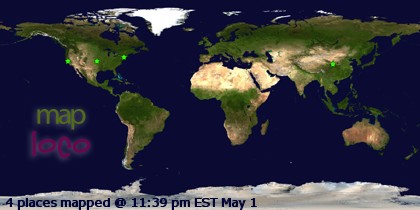 |
| Mom, dad & kids |
 |
| No idea where they go |
We hopped on the Colonial Parkway, a purpose built road that has limited access and also goes by historic stuff. A pretty and quiet drive -- almost enough to make you believe there isn't a WalMart, Home Depot or Busch Gardens theme park full of roller coasters just out of sight. There is, unfortunately.
Just down the road (5 miles?) is Williamsburg. This town is tough to describe. It calls itself Colonial Williamsburg, because the majority of the buildings are from colonial times, and have all been rebuilt or restored as they would have been in the early 1700's. In addition, it was a local capitol for a while. In and of itself, this makes for pretty and quaint buildings (though the architectural style was uninspired). I offer the following photos mostly without captions as there isn't much to say about them.
 |
| Yes, there are pastures in town. And sheep. |
 |
| The former Governor's residence |
 |
| Sealing wax in the Post Office window |
 |
| Stockades and the like |
Williamsburg is like a giant fake history theme park. The buildings are pretty, for sure. But there rest we found mighty tacky. We were glad it was raining and that we were there near closing time, as it kept away a lot of the tourists, and kept the
On the 3rd corner of the Colonial Triangle, some 15 miles from Jamestown and the site of first British settlement, lies Yorktown, where Washington defeated Cornwallis and kicked the British out in 1781. To be frank, I was hesitant to go there, fearing an overly patriotic, "God Bless America" kind of national monument. One Mt. Rushmore is enough. But we were pleasantly surprised.
Perhaps this was in part because it turns out that Washington needed the help of the French -- a LOT of French -- to defeat the British. For instance, it was a French blockade of the mouth of the Chesapeak that prevented Brititsh seapower from coming in and supporting Cornwallis. Not a single US ship was involved in the battle. Over half of Washington's army were French (and German, it turns out) under General Lafayette, and they did most of the Battle of Yortown's heavy lifting. So it's hard to go "rah, rah, we beat them" under these conditions.
The Yorktown battlefield's eathworks have been reconstructed, and period cannon involved in the battle sit in place.
 |
| From the British lines looking at the US trenches |
 |
| This mortar is engraved 1777 |
 |
| French cannon and mortar |
 |
| The view of the British line from the French line |
 |
| Rampart 9, taken by the French |
 |
| Rampart 10, taken by the US |
 |
| They are always unknown |
Next stop: Washington, DC.










No comments:
Post a Comment